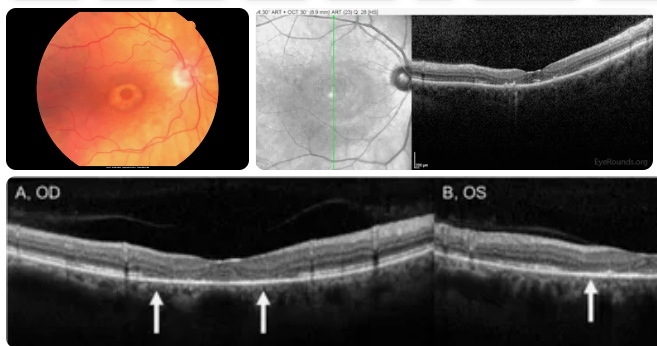
Learn about the importance of regular Plaquenil Eye Exams, potential risks of Plaquenil, guidelines for exams, maintaining eye health, and preventive measures for eye damage. When taking medication like Plaquenil to manage autoimmune conditions such as lupus or rheumatoid arthritis, it’s crucial to prioritize the health of your eyes. Regular Eye Exams are essential to monitor for any potential risks associated with Plaquenil, a medication known to cause eye damage in some cases. In this blog post, we will explore the importance of routine Eye Exams, the potential risks to your eyes while taking Plaquenil, guidelines for scheduling and conducting eye exams specifically for those on this medication, tips for maintaining overall eye health while on Plaquenil, and preventive measures you can take to minimize the risk of eye damage. By being proactive and informed about your eye health, you can ensure a safer and healthier experience while utilizing Plaquenil for your health needs.
Importance of Regular Eye Exams
Regular Eye Exams are crucial for maintaining good eye health and overall well-being. By scheduling routine eye exams, individuals can proactively monitor changes in their vision and detect any potential eye conditions early on. This can help in preventing serious eye diseases and maintaining optimal vision.
During an Eye Exam, an eye care professional will not only assess the sharpness of your vision but also examine the overall health of your eyes. They can identify any signs of eye diseases such as glaucoma, cataracts, or age-related macular degeneration. Early detection of these conditions is key to preventing vision loss and preserving eye health.
Furthermore, regular Eye Exams are essential for detecting systemic health issues such as diabetes, high blood pressure, and certain types of cancer. The eyes can provide valuable insights into one’s overall health, making eye exams an important part of preventive healthcare.
Potential Eye Risks of Plaquenil
Plaquenil, also known as hydroxychloroquine, is a medication commonly used to treat conditions such as rheumatoid arthritis and lupus. While Plaquenil can be an effective treatment for these conditions, it is important to be aware of the potential eye risks associated with this medication. One of the most serious eye risks associated with Plaquenil is the development of retinopathy, which can lead to permanent vision loss if not detected and treated early.
Regular Eye Exams are essential for patients taking Plaquenil in order to monitor for any signs of retinopathy. These Eye Exams typically involve a thorough evaluation of the retina, including visual field testing and optical coherence tomography. It is important for patients to follow their ophthalmologist’s recommendations for the frequency of these Eye Exams, as early detection of retinopathy can help prevent permanent vision loss.
In addition to retinopathy, Plaquenil can also cause other eye-related side effects such as blurred vision, color vision changes, and corneal deposits. Patients who experience any changes in their vision while taking Plaquenil should contact their ophthalmologist immediately for further evaluation. By being aware of the potential eye risks associated with Plaquenil and following the recommended guidelines for eye exams, patients can help to protect their vision and ensure that any eye-related side effects are detected and managed promptly.
Guidelines for Eye Exams on Plaquenil
Regular Eye Exams are crucial for individuals taking Plaquenil to monitor any potential side effects on their vision. It is important to follow specific guidelines for Eye Exams while on this medication to ensure early detection of any eye risks.
Patients should schedule comprehensive Eye Exams with an ophthalmologist before starting Plaquenil treatment and then periodically throughout their treatment. These exams involve a thorough evaluation of the eyes, including visual acuity, visual field testing, and retinal examination.
Additionally, patients should inform their eye care provider that they are taking Plaquenil to ensure the appropriate tests are conducted. Any changes in vision or other eye symptoms should be reported immediately for further evaluation.
Maintaining Eye Health while on Plaquenil
Plaquenil is a commonly prescribed medication for autoimmune diseases such as lupus and rheumatoid arthritis. While it can be highly effective in managing symptoms, there are potential risks to eye health associated with long-term use of Plaquenil. It is important for patients to be proactive in maintaining their eye health while taking this medication.
Regular Eye Exams are crucial for monitoring any changes in vision or eye health that may occur while on Plaquenil. These exams can help detect early signs of retinal toxicity, a rare but serious side effect of the medication. By staying vigilant with regular check-ups, patients can take proactive measures to prevent irreversible damage to their eyes.
In addition to regular Eye Exams, it is important for patients on Plaquenil to follow guidelines for safe dosages and durations of treatment. It is recommended that patients not exceed a certain dose based on their weight, as higher doses increase the risk of retinal toxicity. Patients should also be aware of the potential signs and symptoms of eye damage, such as blurred vision, difficulty reading, or color changes, and report any concerns to their healthcare provider immediately.
Preventive Measures for Eye Damage
Eye health is crucial for overall well-being, as our eyes are our window to the world. It is important to take preventive measures to avoid any potential eye damage, especially for individuals on Plaquenil medication.
One major preventive measure for eye damage is to ensure regular eye exams to monitor any changes in vision or eye health. These exams can help detect any issues early on, allowing for prompt treatment and preventing further damage.
Additionally, it is important for individuals taking Plaquenil to follow specific guidelines for eye exams to ensure proper monitoring and detection of any potential risks. This medication has been associated with various eye risks, such as retinal toxicity, making regular eye exams imperative.